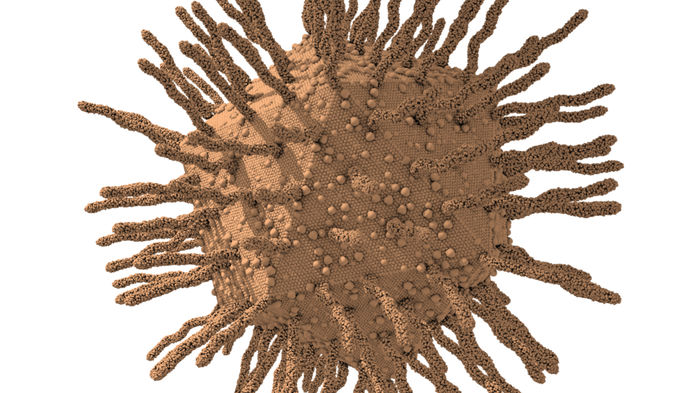Tourists visiting the town of Klosterneuburg in eastern Austria often head for the 12th century monastery or the nearby memorial to author Franz Kafka. Virologists and evolutionary biologists, however, may one day pay homage to the town's sewage treatment plant, which has yielded a genome that appears to be from the most cell-like viruses yet. These oddities challenge the controversial hypothesis that so-called giant viruses are descendants of a vanished group of cellular organisms—a fourth domain of life. Instead, the study argues, these outsized viruses have more pedestrian origins.
"I found [the work] very convincing," says environmental virologist Matthias Fischer of the Max Planck Institute for Medical Research in Heidelberg, Germany. "Based on the data available now, I would not put my money on the fourth domain hypothesis."
Most viruses are much smaller than cells and need few genes because they replicate by co-opting the machinery of their hosts. Certain bird and pig viruses, for example, get by with just two genes, compared with nearly 4400 genes in a common strain of the intestinal bacterium Escherichia coli. Because viruses cannot reproduce independently and lack other hallmarks of cellular organisms, biologists have typically blackballed them from the club of life.
The first report of giant viruses, in Science in 2003, jolted researchers. Not only are these viruses larger than many microorganisms, but they can carry more than 2500 genes, surpassing many bacteria. These behemoths required revisions to the evolutionary tree of life, some scientists contended. The standard tree has three main groups, or domains—bacteria, archaea, and eukaryotes. But several researchers proposed that giant viruses are leftovers of a fourth domain of life. In this view, their ancestors were now-extinct cells that over time ditched many genes and became parasites.
Other scientists, such as evolutionary biologist Eugene Koonin of the National Center for Biotechnology Information in Bethesda, Maryland, saw no need for a fourth domain. "It's crystal clear that these giant viruses belong to a group of viruses that includes much smaller ones," he says. He believes they evolved when some of these smaller viruses incorporated more and more DNA from hosts and became massive.
Frederik Schulz, a postdoc at the Department of Energy Joint Genome Institute in Walnut Creek, California, and colleagues weren't planning to test the fourth domain scenario when they teamed up with Austrian scientists to investigate the microbes residing in sludge from the Klosterneuburg plant. They used a method known as metagenomics, which involves sequencing all the DNA in a sample to identify the genomic fingerprints of new organisms, rather than directly isolating cells or viruses. Viral DNA fragments kept turning up. When the team assembled some of these fragments into a genome, they concluded that it belongs to a new giant virus, which they named Klosneuvirus. By applying the same techniques to samples from other locales, the team pieced together genomes of three kindred viruses.
These Klosneuviruses stood out because their genomes are more cell-like than those of any previous giant viruses. For example, cells stitch together proteins from 20 types of amino acids, and each has a different enzyme that affixes it to a carrier molecule for delivery to sites of protein synthesis. Other giant viruses carry genes for seven varieties of the attachment enzymes, but between them the Klosneuviruses have genes for all 20.
The lifelike genomes of these viruses offered a chance to test whether they descended from a fourth domain of cellular life—or from other viruses. "We thought, ‘Wow, this could be proof for this idea,’" Schulz says. After teaming up with Koonin's lab, the researchers compared the sequences of the different attachment genes across a range of viruses and living organisms. Their analysis indicated that giant viruses had gradually picked up the attachment enzyme genes from different hosts. "There's no evidence for the fourth domain, and this paper confirms it," says Curtis Suttle, an environmental virologist at the University of British Columbia in Vancouver, Canada.
However, co-discoverers of the first giant virus remain holdouts. Microbiologist Didier Raoult of Aix-Marseille University in France argues that the enzyme attachment genes are a shaky foundation for evolutionary conclusions, because they often swap sequences or undergo other changes that blur their origins. Geneticist Jean-Michel Claverie, also of Aix-Marseille University, notes that the study authors identified larger-than-average viral particles in their sludge samples, but didn't demonstrate that the genomes they assembled belonged to these viruses. "I am waiting to see a real virus isolated with its host in a [test] tube before I would believe any of their evolutionary interpretation."
Source: AAAS, Full Article



